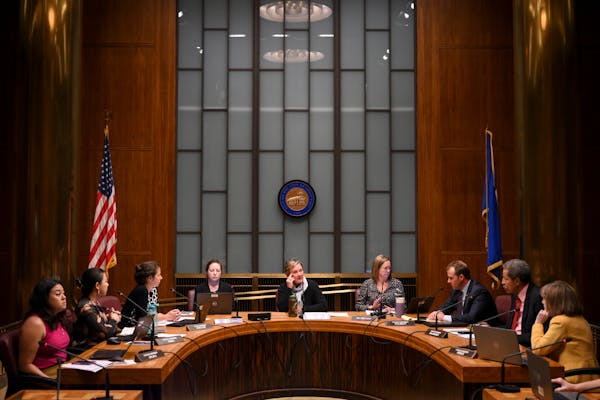At Primrose School of Champlin Park, 3-year-olds are being introduced to Spanish, and at Four Directions Family Center on E. Lake Street in Minneapolis, they are immersed in the Dakota and Ojibwe languages.
Advocates say the brain develops most rapidly in a child's youngest years — so why wait until preschool?
State-funded scholarships commonly associated with 4-year-old preschoolers are being expanded in a big way in 2023-2024 and 2024-2025 to give more low-income infants and toddlers access to richer, more consistent programming. The multimillion-dollar infusion of financial support is the result of a long campaign to get kids off to an early start on their education — really, really early.
"We are really just getting started," Ericca Maas, director of policy and advocacy for Think Small, scholarships administrator in Hennepin and Ramsey counties, said recently.
This year's investment "about cut in half the number of children we estimate are currently left out of these opportunities — from 31,000 to around 15,000," Maas wrote in an e-mail. "But, and this is critically important, we will not close gaps or end disparities until we reach every single one of those remaining 15,000 kids."
To make such growth possible, multiyear access is needed. This year and next, funding of early learning scholarships jumps from $70 million to $196 million a year, part of a package of early childhood measures making this year's session the "most exciting" for state advocates in 50 years, according to a report by the think tank New America.
Backers of the early-education cause often point to research from the Minneapolis Federal Reserve Bank showing that $1 invested in quality preschool education for disadvantaged kids returns up to $16 to taxpayers.
That was in 2003.
At a state Senate hearing in February, labor economist Aaron Sojourner, citing research by the Council of Economic Advisers in 2016, said the gap in cognitive skills between high- and low-income children rises steadily between birth and age 5, at which point it "stops growing, basically, and is pretty stable," he said.
That's when kindergarten starts — suggesting that it is the earlier the better when it comes to tackling achievement gaps, beginning with kids in diapers.
Minnesota is helping promote earlier starts by increasing the maximum scholarship amounts for low-income families from $12,000 to $15,000 per child. Next year, it is expected to begin paying market rates for quality child care, which is nearer to $16,000 per year for preschoolers and $20,000-plus for infants and toddlers, Maas said.
More consistent lessons
At Four Directions, basics come first, of course, and for toddlers that means art created with crayons, Play-Doh, markers and paint: "You name it, we do it," said Dianne Haulcy, president and CEO at Four Directions.
The expanded scholarship amounts reduce the likelihood that parents like Marissa Jeffries, who's had four children at Four Directions, would have to pull kids from programs when their scholarships run out. For her, the money has expired in six months, requiring waits of as long as four months for another scholarship to be found so the kids could start again.
Jeffries told lawmakers in February: "This pattern was hard for our lives. During the down times, I did not have any support to watch my children so ... I could not work," she said. "The kids missed their friends and fell behind in skills. We lost our routine."
In Ramsey and Hennepin counties, Maas said she did not expect a large number of new families to be served. Rather, current recipients will be served better, she said. Also, with options such as Head Start available to low-income 3- and 4-year-olds, she said, she expects more early learning scholarship money to shift to the younger, more expensive age groups.
Primrose School of Champlin Park has space for 56 infants and toddlers, and it is full, owner Joseph Piket said. He is excited the state agreed to help fund wage and benefit increases for early educators. That ensures eligible providers have quality staff on hand, he said, and early learning scholarships do not go unused.
Four Directions has 20 children who are ages 0-2 and 11 who are 3-4 — with space to accommodate more, Haulcy said. There, toddlers learn shapes, numbers and letters. Teachers engage them with books such as "Brown Bear, Brown Bear, What Do You See?" and "Fry Bread: A Native American Family Story."
And the Dakota and Ojibwe immersion classes? They're available to the kids right up to the ripe old age of 5.
For more information
To learn more about early learning scholarships, and how to apply, go to the Minnesota Department of Education website at: education.mn.gov/mde/fam/elsprog/elschol/
Carolyn Parnell, 'trailblazer' who served as Minnesota's first IT commissioner, dies

